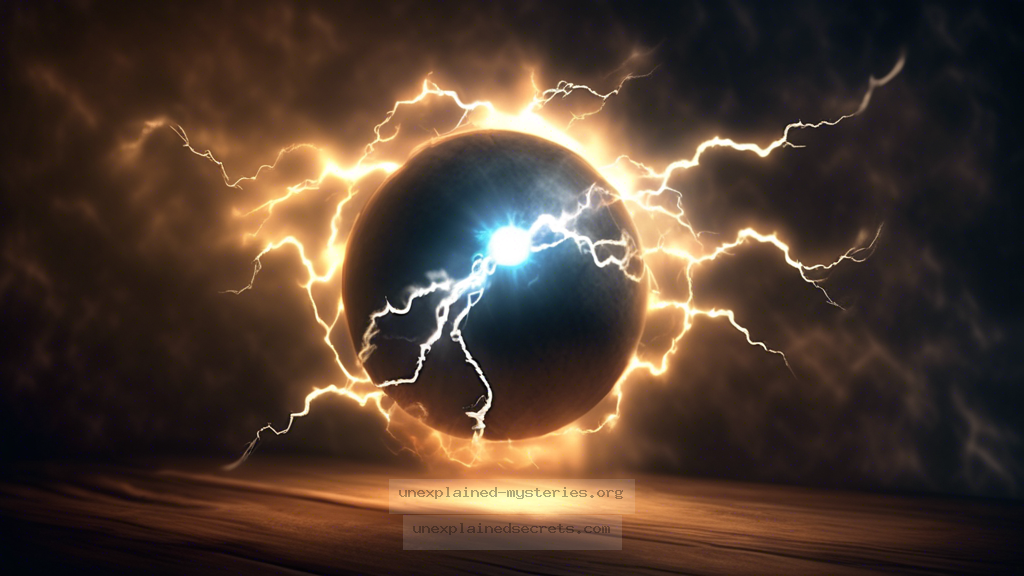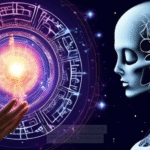What Causes the Unexplained Phenomenon of Ball Lightning?
What Causes the Unexplained Phenomenon of Ball Lightning?
The enigma of ball lightning has puzzled scientists and laypersons alike for centuries. This rare and bizarre phenomenon, often described as glowing spheres ranging from the size of a pea to that of a basketball, appears during thunderstorms and has been reported to float, dart, or even explode. The phenomenon challenges our understanding of physics and raises questions about the nature of electricity and plasma. Why does ball lightning occur, and what scientific anomalies surround its occurrence? Let’s delve deeper into this captivating mystery.
Historical Context of Ball Lightning
The earliest documented accounts of ball lightning date back to the 17th century. One of the first recorded observations was made by the famous scientist Robert Boyle in 1666, who described seeing a “fiery globe.” Over the centuries, numerous sightings have been reported across the globe, from ancient Chinese texts to modern-day anecdotes. Due to its elusive nature, scientific exploration of ball lightning remained limited, often relegated to the realm of folklore and anecdotal evidence.
One notable historical case occurred during a thunderstorm in 1838, when a farmer in England reportedly witnessed a ball of light travel through his home, passing through walls and furniture without causing any damage. This incident sparked curiosity and prompted further inquiry into the phenomenon. Despite countless reports, the lack of reproducible evidence has made it difficult for scientists to study ball lightning in controlled environments.
Core Concepts: What is Ball Lightning?
Ball lightning is typically described as a luminous sphere that can vary in color, size, and behavior. While it is often associated with thunderstorms, it can also appear in clear skies or indoors. The traditional explanation suggests that ball lightning is a form of electrical discharge, but its exact mechanism remains unclear. Some scientists propose that it may be related to plasma physics, while others suggest it could be a manifestation of chemical reactions involving silicon and atmospheric gases.
Understanding ball lightning requires a grasp of several core concepts in physics:
- Plasma Physics: Plasma, often referred to as the fourth state of matter, consists of highly energized particles. It is theorized that ball lightning may be a stable form of plasma.
- Electrical Discharge: Some researchers believe ball lightning may be a type of electrical discharge similar to that of lightning but in a more controlled and confined manner.
- Quantum Effects: Some theories suggest that quantum mechanics might play a role in the formation and stability of ball lightning, allowing it to exist in a state that defies conventional physics.
Practical Implications of Ball Lightning Research
The investigation of ball lightning carries significant implications for our understanding of natural phenomena and electrical safety. For instance, if ball lightning can be better understood, it may lead to improved lightning protection systems, potentially saving lives and preventing property damage. Furthermore, the study of ball lightning could provide insights into energy generation and storage, as the ability to harness the energy of such phenomena might have transformative applications.
Documented Cases and Eyewitness Accounts
Numerous documented cases of ball lightning have emerged over the years, providing a wealth of anecdotal evidence. In 1970, a group of scientists from the Soviet Union reported observing ball lightning during a thunderstorm in Siberia. They described a glowing sphere that hovered above the ground before exploding with a loud bang. In another notable case from 1994, a man in the United States reported seeing a ball of light enter his home, traveling through walls and furniture before vanishing.
While these accounts are intriguing, they often lack the scientific rigor needed for validation. Eyewitness accounts can be influenced by psychological factors and environmental conditions, making it challenging to discern fact from fiction. However, the consistency of these reports across different cultures and time periods suggests that ball lightning is a real phenomenon deserving of further study.
Alternative Perspectives on Ball Lightning
While the scientific community has proposed various theories to explain ball lightning, there remains a considerable degree of skepticism and alternative perspectives. Some researchers argue that ball lightning may not exist as a distinct phenomenon but rather as a collection of unrelated electrical discharges. Others suggest that the phenomenon could be influenced by psychological factors, such as pareidolia, where the human brain perceives familiar patterns in random stimuli.
Additionally, some fringe theories propose that ball lightning could be related to extraterrestrial phenomena or even dimensions beyond our own. While these ideas are often dismissed by mainstream science, they reflect the ongoing mystery surrounding ball lightning and the human fascination with the unexplained.
Common Misconceptions and Clarifications
Misconception: Ball lightning is simply a form of lightning.
Clarification: While ball lightning is associated with thunderstorms, it is distinct from traditional lightning. Its behavior and appearance differ significantly from regular lightning strikes.
Misconception: All reports of ball lightning are hoaxes or misinterpretations.
Clarification: While many reports may be anecdotal, the consistency of descriptions across cultures and time periods suggests that some form of the phenomenon is genuine.
Investigating Ball Lightning: Best Practices
Investigating ball lightning poses unique challenges due to its unpredictable nature. Researchers looking to study this phenomenon should consider the following best practices:
- Controlled Environments: Whenever possible, create controlled conditions that simulate the necessary atmospheric and electrical conditions for ball lightning.
- Instrumentation: Utilize advanced sensors and cameras capable of capturing high-speed events to document any occurrences of ball lightning.
- Collaboration: Work alongside meteorologists, electrical engineers, and physicists to gain a multidisciplinary perspective on the phenomenon.
Future Developments and Ongoing Research
The quest to understand ball lightning is ongoing, with researchers employing modern technology and interdisciplinary approaches. Recent advancements in high-speed photography and plasma physics have opened new avenues for investigating this mysterious phenomenon. Studies are being conducted to explore potential connections between ball lightning and other electrical phenomena, such as sprites and elves—high-altitude electrical discharges associated with thunderstorms.
Moreover, artificial ball lightning has been created in laboratory conditions using plasma generators, providing a controlled environment for study. As research progresses, we may finally uncover the underlying mechanisms behind this captivating enigma.
Conclusion: The Allure of the Unexplained
Ball lightning stands as one of the most perplexing scientific anomalies, challenging our understanding of physics and natural phenomena. Despite centuries of intrigue and investigation, its mechanisms remain largely a mystery. Through historical accounts, documented cases, and ongoing research, we see that there is still much to learn about this phenomenon. As science continues to evolve, the hope remains that we will one day unlock the secrets of ball lightning, shedding light on one of nature’s most captivating mysteries. 💡
Other Articles
Recent Posts
- What Happened to Flight MH370? The Conspiracy Theories That Still Haunt Us
- What Secrets Lurk Within the Walls of the Infamous Trans-Allegheny Lunatic Asylum?
- What Evidence Supports the Existence of Bigfoot in the Pacific Northwest?
- What Happened to the Indus Valley Civilization? Unraveling the Mysteries of Ancient Urban Life
- Can Telepathy Be Scientifically Proven Through Laboratory Evidence?







